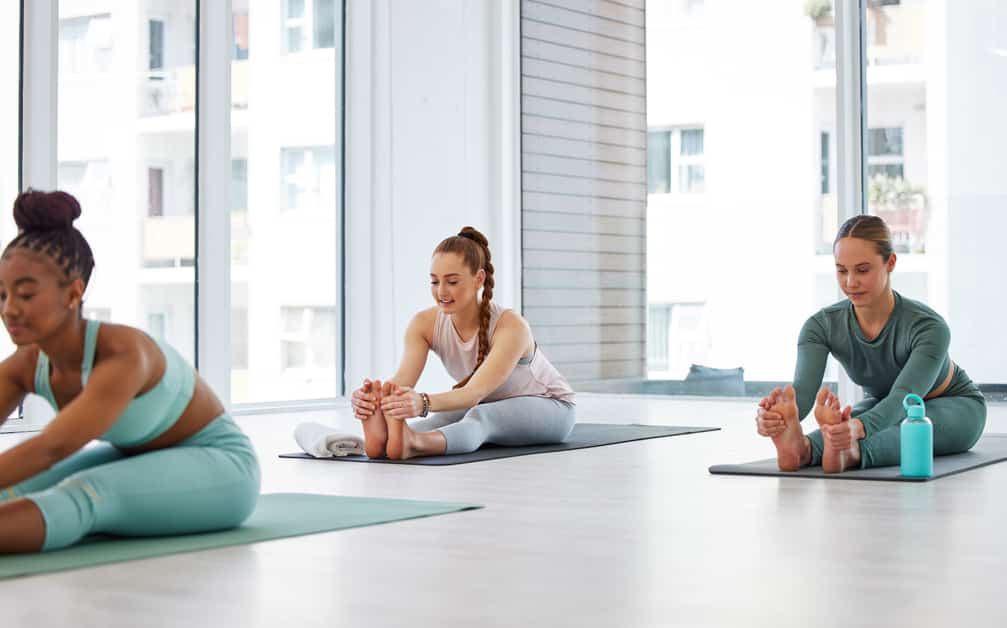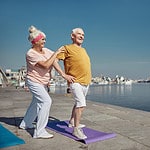Introduction
Knee osteoarthritis (OA) is a common musculoskeletal disorder. It causes joint pain, reduced range of motion, and stiffness. After physical activity, individuals with knee OA may experience an increase in their symptoms. Regular cooling down exercises can help. They relieve discomfort and promote movement for increased mobility and flexibility.
Cooling down should start with a gradual transition from the activity to light activity like walking. This will lower the heart rate and reduce muscle tension. Stretching and strengthening exercises can be included depending on needs. Passive stretching while sitting or standing can loosen tight muscles and improve circulation. Strengthening exercises with weights, resistance bands, or bodyweight-resistance exercises should be included for improved strength in the joint and surrounding muscles.
The goal of cooling down with knee OA is to reduce stiffness and soreness due to prolonged exercise. It is important to recognize limitations. If pain or discomfort occurs during stretching or strengthening exercises, stop immediately to avoid further injury.
Benefits of Cooling Down
Cooling down can be beneficial to those with knee osteoarthritis. It can reduce pain, increase range of motion, and enhance muscle function. Taking time to cool down after exercise is great for your joints and muscles. Let us explore the advantages of cooling down!
- Reduces pain
- Increases range of motion
- Enhances muscle function
Reducing inflammation
Arthritis can damage joints when inflammation increases. Cooling down after exercise is an effective way to control this inflammation and prevent pain. It helps circulation which brings oxygenated blood and removes lactic acid, which causes soreness. Muscles can repair from any micro-tears with cooling down.
Relaxing muscles is important for health. It stops stiffness in the joints when bending or moving. Cooling down also reduces the risk of sprains and injuries around the knees by flushing out toxins from physical activity.
Cool down slowly after an intense workout. Focus on deep breathing and stretching the legs and hips. Light walking can return blood flow to normal. Do some gentle cobra poses for loosening tightness around the knee and proper breathing for heightened alertness.
Improving joint range of motion
Cooling down after physical activity is necessary. It benefits joint flexibility and strength. Folks with knee osteoarthritis may have issues with joint range of motion, so cooling down is essential.
Here are some ways to cool down:
- Stretch with low intensity. Movements should be comfortable, not causing pain.
- Do light exercises like walking, cycling, and swimming. This helps keep joint flexibility while decreasing inflammation and increasing blood flow.
- Ice therapy. It is especially good after a tough session of exercise. Ice packs help reduce joint stiffness and swelling for up to 15 minutes. It gives short-term relief and makes a difference in the days after exercise.
Improving muscle strength
Cooling down is essential for good muscle and joint health. People with knee osteoarthritis must cool down to keep symptoms at bay and maintain mobility. A good cool down routine should include various activities that help improve muscle strength, flexibility, and range of motion.
Stretching is great for flexibility and range of motion in the knee joint and the muscles around it. It reduces stiffness and makes it easier to move. Also, it balances flexibility between both legs. Do static stretching after every exercise session before cooling down.
Range-of-motion exercises involve moving your joints through their full range of motion. This improves tissue extensibility, coordination, balance, and proprioception. But, do these exercises with care; otherwise, it can do more harm than good.
Strength exercises, such as leg lifts and squats, help build strong leg muscles that provide support for the joints and reduce pain. Remember to use proper form when doing strength training or any cool down routine. Know the correct technique before beginning to avoid further damage or harm.
Cooling Down Routines for People with Knee Osteoarthritis
Cooling off post-workout is vital for everyone, but especially those with knee osteoarthritis. It can stop extra strain on the joints, lower swelling, and avoid further harm. To cool down, those with knee osteoarthritis should do soft stretches and low-impact exercises. This can reduce joint stiffness and enhance flexibility.
Let’s check out some cooling ideas for those with knee osteoarthritis:
Ice Packs
Ice packs can reduce inflammation and ease pain. It’s thought that they work by lowering the temperature, which reduces nerve conduction in the knee and lowers the inflammatory response, helping to lessen pain.
Before using an ice pack, speak to your doctor or physical therapist about the right time and length of time to use it.
To use an ice pack safely:
- Wrap a plastic bag filled with crushed or cubed ice around your joint.
- Keep it on for 15-20 minutes.
- Move the pack around and check your skin temp at regular intervals to make sure you don’t get frostbite.
After the ice treatment, massage any areas near the treated area for 2-3 minutes. This will help reduce inflammation and pain.
Before starting any treatment plan for osteoarthritis, including using an ice pack, talk to your doctor.
Compression
Compression helps with swelling and pains due to knee OA. Too much compression can be uncomfortable. For the right level of compression, use wraps and braces that fit comfortably around your knee. Generally speaking, the recommended compression is 20mmHg+.
To apply a wrap or brace:
- Start from the bottom of the knee and wrap up towards the thigh.
- Wrap around the back with some overlap each pass. Don’t make it too tight.
- After a workout, wearing it for up to two hours may reduce pain and inflammation.
Low-Impact Exercise
Low-impact exercise is essential for people with knee osteoarthritis. This type of activity relieves pressure on the joint, while providing exercise and range of motion. Examples include:
- stretching
- swimming
- aqua aerobics
- biking (road or stationary)
- the elliptical
Stretching before and after is important for strengthening the muscles around the knee and preventing further injury. When confident in their movements, people can progress to higher-intensity exercises such as running or jogging. It’s key to start slowly and gradually build up, to avoid further injury to the joints.
Conclusion
To sum up, cooling-down routines are a key component in managing knee osteoarthritis. These routines must be included in a custom exercise program suited to the person’s needs and capabilities. Cooling-down can aid in reducing pain for the time being, increase joint mobility, and boost practical abilities for those with this condition. Cooling-down after exercising is vital to avoiding injury or intensifying symptoms.
Cooling-down should involve:
- Stretching
- Massage
- Icing
- Contrast baths
By setting up a regular cool-down routine that works for each individual, people with knee osteoarthritis can raise their overall quality of life and reduce ongoing pain from this condition.
Frequently Asked Questions
Q1: What are some good cooling down exercises for people with knee osteoarthritis?
A1: Some good cooling down exercises for people with knee osteoarthritis include gentle stretching, walking, and low-impact exercises like swimming and cycling. Additionally, warm baths or showers can help to loosen the joints.
Q2: How often should I be doing cooling down exercises?
A2: It is recommended that people with knee osteoarthritis do cooling down exercises at least three times a week. However, the frequency of the exercises can vary depending on your individual needs.
Q3: Can cooling down exercises help to reduce pain and stiffness?
A3: Yes, cooling down exercises can help to reduce pain and stiffness associated with knee osteoarthritis. Regularly doing these exercises can help to improve mobility and range of motion as well.





